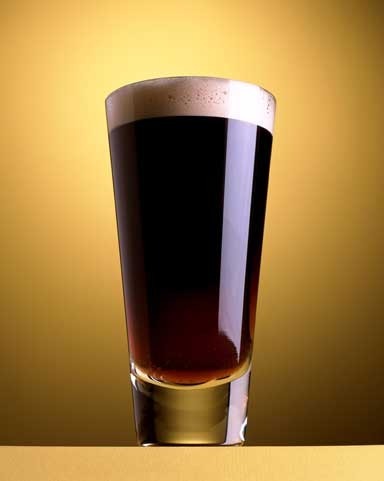Twist and Stout

I spent last weekend in LA, and had dinner one evening at Wurstküche, a new downtown hotspot. The restaurant (as its name would imply) specializes in sausages and has about 25 German and Belgian beers on tap. I was surprised, not because there was such a place in downtown LA (which has become quite hip) but because I was taken there by a vegetarian whom I had never seen drink beer. But in addition to the various traditional würste (which have been among my favorite foods since early childhood) and all kinds of fancy and contrived "gourmet sausages" (for which I am not sure I really have any use) they also have a very good vegetable sausage (huh?) and my companion had recently been converted to beer after a recent trip to Europe and was giving herself a methodical course in malt beverages.
So, as we stood in line to order, we discussed what we were going to drink. I ordered an Optimator, a dark bock beer from the Spatten brewery in Munich to go with by bratwurst (I had decided against the rattlesnake and rabbit sausage that was the special of the day). "Hm," said my friend, " I'm not sure I'm ready for something that heavy. I'm still exploring light beers," and she ordered a Bitburger Pilsner. Now Optimator is stronger and heavier than the Bitburger, but the color has nothing to do with it, as can be seen if you mix yourself a "black and tan". Fill a glass half full of pale ale and then, pouring the beer gently down the side of the glass to avoid mixing the two, fill the rest of the way with Guinness. The opaque black stout will float on top of the lighter colored ale. The same thing will happen if you use Pilsner, which is even lighter, in place of the ale.
The color of beer depends on the malt used and the color of the malt depends on the degree to which the barley is allowed to color as it is dried. It can be absolutely white or caramelized to a dark brown. Darker malt may impart a caramel or molasses flavor where paler malt may remind one of fresh bread, but the weight of the beer is provided by dextrins, unfermentable sugars that are extracted in the mashing process and which do not affect the color. The characteristic blackness of stout comes from using a percentage of roasted barley in the mash, which, because it is not malted, contributes very little in the way of fermentable sugars or dextrin. So, while many dark beers may be heavier than many lighter ones, it is not always the case.
So what is light beer and what makes so-called light or (God forgive me) "lite" beer lighter? Well…it used to be that there was something called "small beer" which demoted a weaker beer, often a home made preparation of any fermentable substance, sometimes by re-soaking the malt to rinse of any leftover sugar that could be fermented but sometimes from molasses mixed with bran or other ingredients. I imagine it was not unlike Kvass, a traditional Russian peasant drink made from stale bread crusts. Small beer is mentioned by mediaeval writers and by Shakespeare (never favorably) and examples are still to be found if you look hard enough. A more immediate progenitor of lite beer (I am using that unfortunate spelling to differentiate from beers of light color) is the "near beer" of prohibition, which one write described as ""such a wishy-washy, thin, ill-tasting, discouraging sort of slop that it might have been dreamed up by a Puritan Machiavelli with the intent of disgusting drinkers with genuine beer forever." The same applies to today's lite. Often it is simply a pale lager that wasn't very good to start with has been watered down to reduce the calories and alcohol per serving (and increase profits). Sometimes the "mouth feel" has been further lighted by the introduction of enzymes that break down the dextins. Appetizing, isn't it? Lite beer is a brilliant marketing idea to make people think they are somehow being healthier than they would be if they drank real beer and therefore drink more of it. I have never had a lite beer that I would want to drink a second time. I am sure it is an abomination in the sight of the Lord.
Read more about our month-long celebration of the brew. Click here



